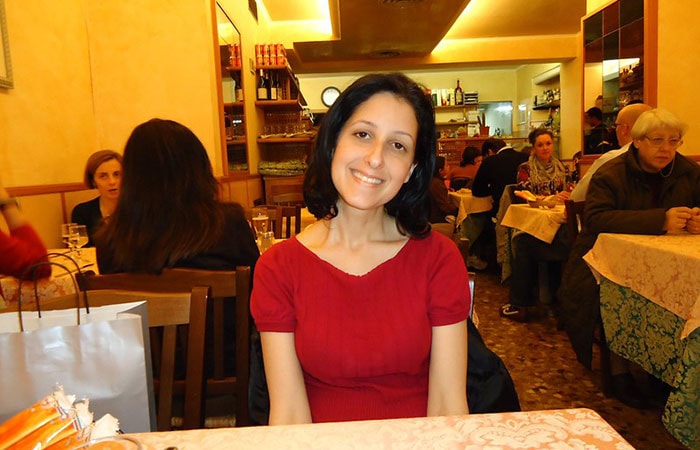At a glance
Danielle Kahn knew something was wrong after a trip to Utah. After initially being misdiagnosed with asthma, she sought a second opinion and discovered she had a pulmonary embolism, or blood clot. Read her journey to learn more about her experience with blood clots.

Danielle's story
I'm Danielle Kahn. When I was 36 I went on a business trip, flying out west to Utah for a few days—a four-hour flight from Atlanta. While there, I went running in Salt Lake City for a few miles and felt a little bit uncomfortable at the altitude there, which was 4,300 feet.
I flew home and did not move around or drink very much on the flight. When I returned to work a few days later, I had developed a strange hacking cough. Inconsistent with being fit from running, I was short of breath and dizzy when climbing stairs. I carried on for a few days, thinking I had a bad chest cold and I would be better in a few days.
Then, in the middle of the night, I woke up suddenly, my heart exploding as though I had been sprinting. It felt like someone had shot me in the lungs, or like cotton was stuffed in my lungs. I did not know what was happening to me but knew I had to get to the hospital. I drove myself there, having trouble breathing and speeding recklessly.
My experience with the emergency room physician that night was not a positive one. I was misdiagnosed with asthma and treated with albuterol. I was never given blood work or a CT scan. I pleaded with the doctor and nurses not to discharge me because I still, after several hours, was having trouble breathing. I was extremely anxious and told to take a Xanax® and go home. There were people who needed my space more.
The next few days I was able to receive some help from family. We were able to make an appointment with a pulmonologist and through a process that took almost another week, I was correctly diagnosed as having had a pulmonary embolism. I had no known risk factors except a hour flight and dehydration. In terms of the treatment, I did not tolerate blood thinners very well and had to take blood thinning injections for a few months.
I did not return to work for 6 weeks. The recovery from something like this is fairly long. Psychologically, I was prone to anxiety and depression as a result of my experience. But I was determined to get well and get on with my life. Over time, I felt better and started exercising more. I was able to take up swimming and jogging and found that these activities helped me increase my lung capacity.
Lessons learned
This experience changed me in a very deep way. I can never take my life for granted again. I was able to reprioritize and focus on new things in life. The idea of living for today became very real to me. All in all, I was able to grow as a human being and feel more grounded from this experience.
More so, I work as an epidemiologist at CDC and have taken on a passionate interest in the public health implications of my experience with pulmonary embolism. I hope one day I can say that I have positively impacted the health outcomes of people at risk for this condition.
CDC would like to thank Danielle for sharing this personal story.
